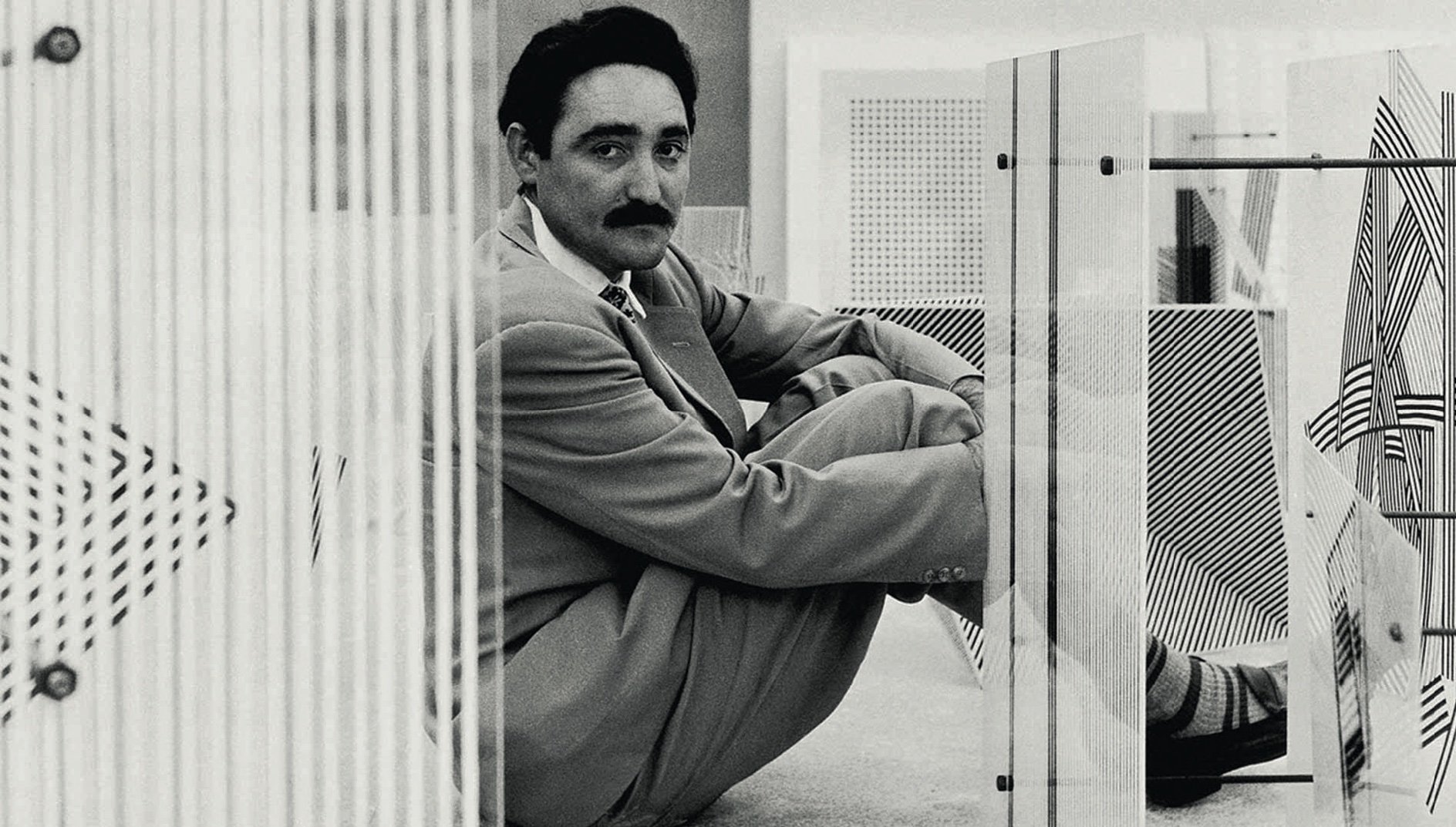
Every month, hundreds of galleries add newly available works by thousands of artists to the Artnet Gallery Network—and every week, we shine a spotlight on one artist or exhibition you should know. Check out what we have in store, and inquire for more with one simple click.
What You Need to Know: Recently opened Ascaso Gallery of Downtown Miami is presenting the solo show “Jesús Raael Soto: Vibración Pura Centennal 1923 | 2023.” On view through February 29, 2023, the exhibition marks the centennial of the renowned Venezuelan artist and sculptor’s birth, highlighting his experimental practice and innovation in the realm of kinetic art. The present show is the first solo presentation of the artist’s work in the gallery’s Miami location, and fifth with the gallery overall. Featuring a sweeping selection of pieces from between 1951 and 2004, “Vibración Pura” offers a glimpse into several of Soto’s most recognized periods, as well as insight into the overarching trajectory of his practice.
About the Artist: Op and kinetic art pioneer Jesús Rafael Soto (1923–2005) began his career at the age of 16, producing painted posters for movie cinemas in the city of Ciudad Bolívar, Venezuela. At this point in his development, the main art and artists he was exposed to were lettering painters, artisans who created commercial signs and displays. By the late 1930s, Soto became involved with a student group engaged with Surrealism and its ideas, such as automatic writing and techniques of charcoal drawing. He attended the Escuela de Artes Plásticas y Artes Aplicadas on a scholarship between 1942 and 1947, where he was exposed to theories of “pure art” and the work of artists such as the modernist Georges Braque—a pivotal experience for his burgeoning practice.
In the early 1950s, he relocated to Paris, France, where he would remain until his death. Soto’s early work bears the influence of post-Impressionism, but interactions with Constructivist artists, such as Kazimir Malevich and Piet Mondrian, led him to engage with Cubism, and subsequently experiment with Op art. He soon developed a practice centered on serialization, repeating motifs across works to interrogate their ultimate boundaries. His work transcended the boundaries of genre, as he moved fluently between sculpture and painting, and promoted the idea that process was a key and universal element of art making.
Why We Like It: Soto’s influence on the development and course of 20th-century Modern art was significant, as he was able to take the aesthetics and ideas of the turn of the century and create a path forward through experimentation with, and interrogation of, medium, perception, and process. Considered alongside other pioneers like Alexander Calder and George Rickey, Soto’s practice remains singular as he did not ascribe to any particular artistic ideology or methodology. Instead, his works are conclusions to individual and evolving lines of inquiry. Featuring a diverse range of work dated from across more than five decades, the “Vibración Pura” show offers visitors the chance to observe the culmination of much of Soto’s practice together, through the juxtaposition of early and late, as well as contemporaneous, works.
See inside the exhibition below.
Installation view of “Jesús Rafael Soto: Vibración Pura Centennal 1923 | 2023.” Courtesy of Ascaso Gallery, Miami and Caracas.
Installation view of “Jesús Rafael Soto: Vibración Pura Centennal 1923 | 2023.” Courtesy of Ascaso Gallery, Miami and Caracas.
Installation view of “Jesús Rafael Soto: Vibración Pura Centennal 1923 | 2023.” Courtesy of Ascaso Gallery, Miami and Caracas.
Installation view of “Jesús Rafael Soto: Vibración Pura Centennal 1923 | 2023.” Courtesy of Ascaso Gallery, Miami and Caracas.
Installation view of “Jesús Rafael Soto: Vibración Pura Centennal 1923 | 2023.” Courtesy of Ascaso Gallery, Miami and Caracas.
“Jesús Rafael Soto: Vibración Pura” is on view at Ascaso Gallery, Miami, through February 29, 2024.